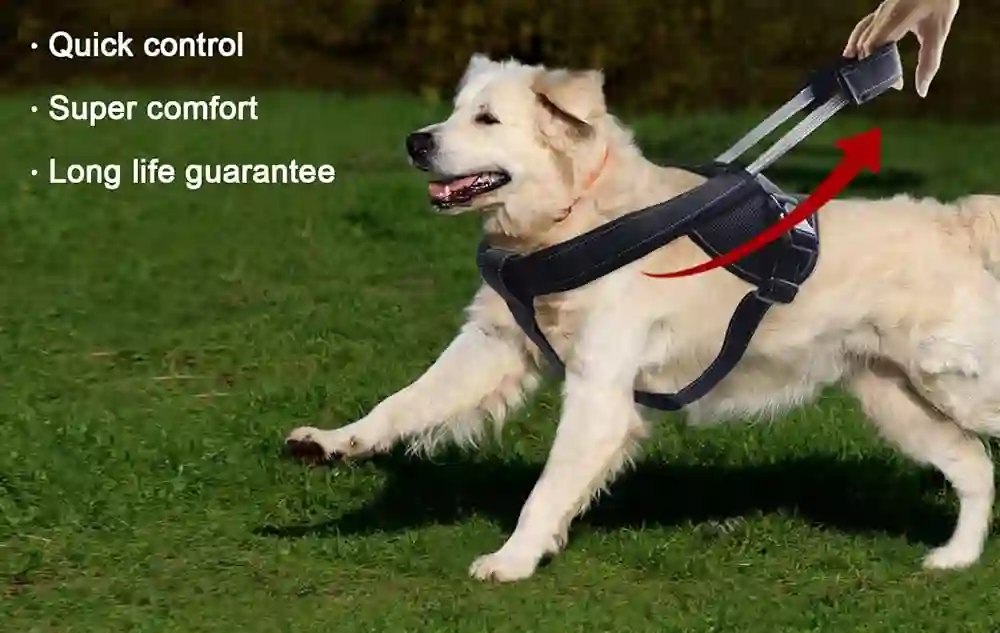Walking your dog should be a pleasant experience, but it can quickly become a challenge if your furry friend tends to pull on the leash. This common issue not only makes walks less enjoyable but can also lead to strain on both the dog and the owner. Enter the no-pull dog harness – a brilliant solution for enthusiastic pullers. This article will delve into how no-pull dog harnesses work, their benefits, and why you might consider investing in one for your canine companion.
Understanding No-Pull Dog Harnesses:
No-pull dog harnesses are specially designed to discourage pulling behavior. Unlike traditional collars or basic harnesses that allow dogs to use their strength to pull forward, no-pull harnesses are engineered to redirect this energy. They typically have leash attachments at the chest and sometimes on the back. When a dog pulls, the design of the harness guides the dog back towards the owner, reducing the force of the pull and discouraging the behavior.
How No-Pull Harnesses Work:
- Front-Clip Harnesses: These harnesses have a leash attachment point on the chest. When the dog pulls, the harness steers the dog to the side and redirects their attention towards the owner. This design not only reduces pulling but also gives the owner more control.
- Dual-Clip Harnesses: Offering more versatility, these harnesses have attachment points on both the chest and the back. They can be used as a standard harness with back-leash attachment or as a no-pull harness with the front attachment.
- Tightening Harnesses: Some no-pull harnesses are designed to apply gentle pressure when a dog pulls. These should be used with caution and under professional guidance to ensure they do not cause discomfort or harm to the dog.
Benefits of No-Pull Dog Harnesses:
- Improved Control: These harnesses provide better control over dogs who are strong pullers, making walks safer and more manageable.
- Reduced Strain on the Dog: Traditional collars can put pressure on a dog’s neck and throat, which can lead to injury. No-pull harnesses distribute the force across the chest and shoulders, reducing the risk of choking or neck injury.
- Training Aid: No-pull harnesses can be an effective training tool to teach dogs to walk calmly by your side. They are often used in conjunction with positive reinforcement training techniques.
- Increased Comfort: Many no-pull harnesses are designed with padding and adjustable straps to ensure a comfortable fit, making walks more enjoyable for your dog.
Choosing the Right No-Pull Harness:
When selecting a no-pull harness, consider the following factors:
- Size and Fit: Make sure the harness fits your dog properly. It should be snug but not too tight, allowing you to fit two fingers between the harness and your dog’s body.
- Adjustability: Look for a harness with adjustable straps to ensure a secure and comfortable fit.
- Quality and Durability: Choose a harness made from high-quality, durable materials that can withstand regular use and pulling force.
- Dog’s Needs and Behavior: Consider your dog’s size, breed, and pulling behavior. Some harnesses are better suited for larger breeds or dogs with specific walking habits.
Conclusion:
A no-pull dog harness can be a game-changer for dog owners struggling with a pulling pooch. These harnesses are not just about making walks easier; they’re about creating a safer and more enjoyable experience for both you and your dog. By understanding how no-pull harnesses work and choosing the right one for your pet, you can reduce pulling behavior, prevent potential injuries, and foster a more harmonious walking partnership. Whether you have a spirited puppy or a strong-willed adult dog, a no-pull harness could be the key to transforming your daily walks into pleasant, stress-free outings.








